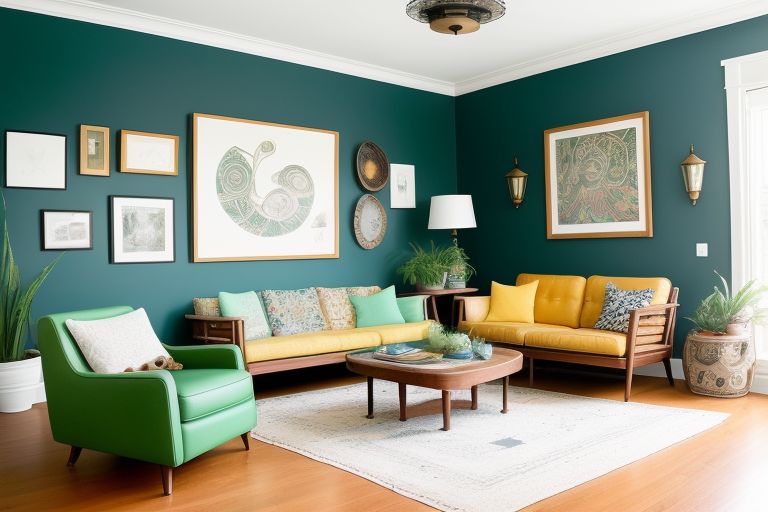The Significance of a Bed Frame in Sleep Quality
When it comes to getting a good night's sleep, most people focus on choosing the right mattress. However, the bed frame plays an equally crucial role in defining not only the look and feel of your bedroom but also the comfort and support of your sleep. Selecting the perfect bed frame involves understanding different sleep styles and the physical attributes that can enhance sleep quality. This comprehensive guide will help you navigate through the options and choose a bed frame that complements your mattress and sleep preferences.
Understanding Your Sleep Style
Your sleep style or sleep position significantly influences the type of bed frame you should consider:
- Side Sleepers: Need a softer, pressure-relieving mattress, and thus, a bed frame that supports this with a flat, stable base or one with slight contouring.
- Back Sleepers: Benefit from a firmer mattress, and consequently, a bed frame that provides uniform support across the entire mattress area.
- Stomach Sleepers: Require a very firm mattress to avoid lower back curvature, supported by a solid, unwavering bed frame.
- Combination Sleepers: Might prefer an adjustable base that allows for dynamic changes during the night to suit different positions.
Types of Bed Frames
1. Traditional Frame
These are the standard bed frames made from wood or metal, designed to support any type of mattress. They are cost-effective, easy to assemble, and suitable for almost all sleep styles. However, they often lack in design flexibility and adjustable features.
2. Platform Beds
Platform beds feature a solid or slatted base, which eliminates the need for a box spring. This design provides excellent support for memory foam, latex, and other flexible mattresses. They come in various designs - minimalist to luxurious, offering both aesthetic appeal and functionality. Side and stomach sleepers might find these beds particularly beneficial due to the lower height reducing the effort to get into bed and the firm support offered.
3. Adjustable Bases
Adjustable bases are the epitome of modern sleep technology. They can incline at various angles, supporting different sleeping positions, reading, or even just watching TV in bed. These are ideal for combination sleepers or anyone with health concerns needing customized support or elevation.
4. Canopy and Poster Beds
While chosen often for their grandeur, these beds can be outfitted with canopies or drapes for privacy and to block out external light, which can be beneficial for light-sensitive sleepers. Their height might require a small step stool but offers a sense of royal retreat.
5. Upholstered Beds
Upholstered beds add texture and style to the bedroom. They generally have high headboards for additional support, which can be a plus for those who enjoy reading or watching TV in bed. However, ensure the frame underneath is robust to support heavier mattresses.
6. Storage Beds
Ideal for smaller spaces, storage beds come with drawers or a lift-up mechanism. They cater well to individuals looking to utilize space efficiently without compromising on sleep comfort.
Considerations When Choosing a Bed Frame
- Support: Ensure the frame provides even support to your mattress, reducing sagging and wear over time. Look for sturdy slats or a solid base.
- Durability: The frame should stand up to years of use. Check for robust joints, quality materials, and perhaps even consider the weight capacity.
- Material: Decide between wood (for a warm look), metal (for a modern, industrial feel), or upholstered frames for comfort and style.
- Aesthetic Appeal: The bed is a focal point in the bedroom; it should align with your decor style - from minimalist to eclectic.
- Height: Consider how easy it is to get in and out of bed. Lower beds might suit older sleepers or those with mobility issues.
- Mattress Compatibility: Some frames require specific mattress types (like box springs), so ensure compatibility.
Tips for Selecting Your Perfect Bed Frame
- Measure your space: Ensure your room can accommodate the frame you're eyeing, including space to walk around comfortably.
- Test the Frame: If possible, visit a showroom to physically test how the frame feels to sit or lie on with your mattress.
- Look at Additional Features: Features like headboard integration, built-in USB ports, or lighting can enhance your sleeping experience.
- Read Reviews: Customer experiences can provide insights into the durability, comfort, and assembly ease of the bed frame.
- Consider Long-term Needs: Think about future changes in your health or lifestyle that might impact your sleep comfort needs.
Conclusion
Choosing the right bed frame isn't just about enhancing the visual appeal of your bedroom; it's about creating a sleep sanctuary tailored to your specific needs. By understanding your sleep style and considering the functional aspects of different bed frame types, you can make an informed choice that promises not only aesthetic pleasure but also a significant improvement in your sleep quality. Remember, investing in a good bed frame is investing in your health and well-being. Ensure you're laying the strong foundations for rest every night.


